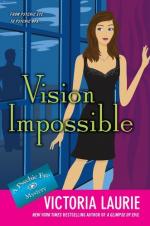|
This section contains 283 words (approx. 1 page at 300 words per page) |

|
The computer age allowed parapsychologists to develop another experiment to test for psi-the random—number generator (RNG) and the random—event generator (REG). Both machines operate on the same principle: They display numbers or lights randomly and the subjects (operators) try to mentally influence the distribution of numbers or lights. Robert Jahn developed a laboratory at Princeton University to study micropsychokinesis, as the phenomenon is known, as did Helmut Schmidt at Boeing Research Labs in Seattle. Both scientists performed hundreds of thousands of tests, and both achieved results that were statistically significant- high enough over what chance would predict to indicate that psi could be at work.
Critics of the experiments argue that these results are not necessarily the results of psi. Schmidt's results, for example, were only 1 percent higher than chance predicts, which could be significant if they were maintained over thousands...
|
This section contains 283 words (approx. 1 page at 300 words per page) |

|




